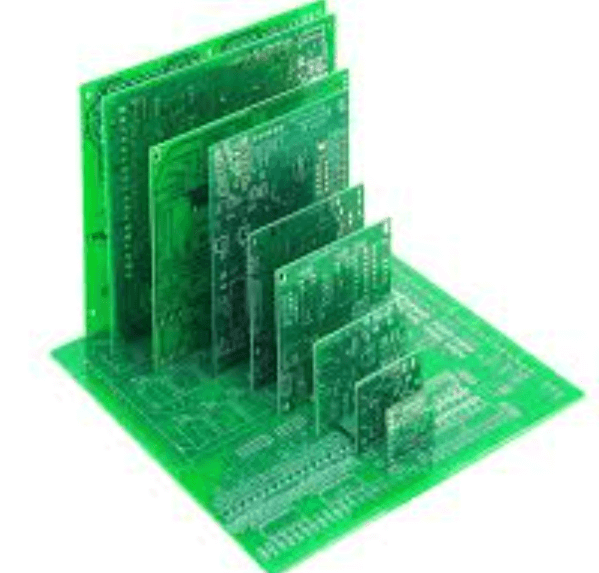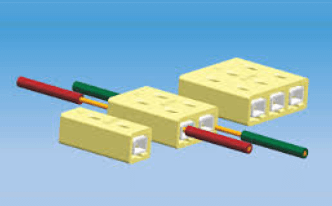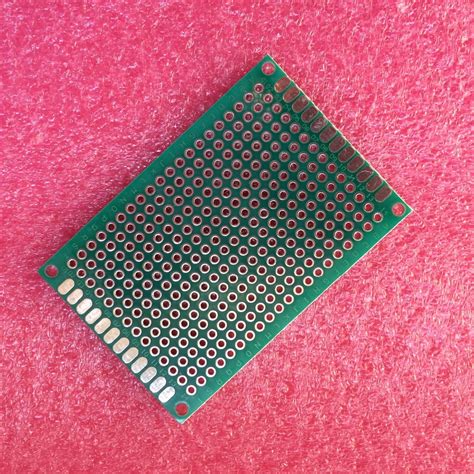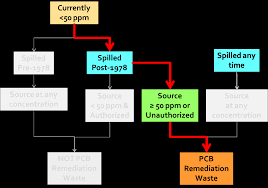Iron metal core pcb
Advantages Of Using Iron Metal Core PCBs In High-Temperature Applications
Iron metal core printed circuit boards (PCBs) have emerged as a pivotal innovation in the realm of electronics, particularly in high-temperature applications. These PCBs are distinguished by their unique construction, which incorporates an iron metal core. This core serves as a thermal management solution, offering a range of advantages that make iron metal core PCBs an ideal choice for environments where heat dissipation is critical.
One of the primary advantages of using iron metal core PCBs in high-temperature applications is their superior thermal conductivity.
The iron core acts as an efficient heat sink, effectively dissipating heat away from critical components. This capability is crucial in preventing overheating, which can lead to component failure and reduced lifespan of electronic devices. By maintaining optimal operating temperatures, iron metal core PCBs enhance the reliability and durability of electronic systems, making them particularly suitable for applications such as LED lighting, automotive electronics, and power electronics, where heat generation is significant.
In addition to their thermal management properties, iron metal core PCBs offer mechanical stability.
The robust nature of the iron core provides structural integrity, reducing the risk of warping or deformation under thermal stress. This stability is essential in high-temperature environments, where fluctuations in temperature can cause expansion and contraction of materials. The mechanical strength of iron metal core PCBs ensures that they maintain their form and function, even under challenging conditions, thereby contributing to the overall reliability of the electronic system.
Moreover, the use of iron metal core PCBs can lead to a reduction in the size and weight of electronic devices.
Traditional PCBs often require additional heat sinks or cooling mechanisms to manage thermal loads, which can add bulk and complexity to the design. In contrast, the inherent thermal management capabilities of iron metal core PCBs eliminate the need for such auxiliary components, allowing for more compact and lightweight designs. This advantage is particularly beneficial in applications where space and weight are critical considerations, such as in aerospace and portable electronic devices.
Furthermore, iron metal core PCBs exhibit excellent electromagnetic interference (EMI) shielding properties.
The iron core acts as a barrier to electromagnetic fields, reducing the risk of interference with other electronic components. This characteristic is especially important in high-frequency applications, where EMI can significantly impact performance. By minimizing EMI, iron metal core PCBs contribute to the overall efficiency and functionality of electronic systems, ensuring that they operate smoothly and without disruption.
In conclusion, the advantages of using iron metal core PCBs in high-temperature applications are manifold.
Their superior thermal conductivity, mechanical stability, size and weight reduction potential, and EMI shielding capabilities make them an ideal choice for a wide range of applications. As electronic devices continue to evolve and demand higher performance, the role of iron metal core PCBs in ensuring reliability and efficiency becomes increasingly significant. By addressing the challenges associated with heat management and structural integrity, these PCBs pave the way for more robust and efficient electronic systems, ultimately contributing to advancements in technology and innovation.
Design Considerations For Iron Metal Core PCBs In LED Lighting
When designing iron metal core printed circuit boards (PCBs) for LED lighting applications, several critical considerations must be taken into account to ensure optimal performance and reliability. Iron metal core PCBs are particularly advantageous in LED lighting due to their superior thermal management capabilities. As LEDs generate significant heat during operation, effective heat dissipation is crucial to maintain the longevity and efficiency of the lighting system. Therefore, the choice of an iron metal core, known for its excellent thermal conductivity, becomes a pivotal factor in the design process.
To begin with, understanding the thermal requirements of the LED system is essential.
The thermal conductivity of the iron core must be matched to the heat output of the LEDs to prevent overheating, which can lead to reduced lifespan and performance degradation. Designers must calculate the thermal resistance and ensure that the iron core can effectively transfer heat away from the LEDs to the heat sink. This involves selecting the appropriate thickness and material composition of the iron core to achieve the desired thermal performance.
In addition to thermal management, electrical considerations are equally important.
The design must ensure that the electrical pathways on the PCB are optimized for minimal resistance and maximum efficiency. This involves careful planning of the trace layout to avoid any potential issues such as voltage drops or electromagnetic interference, which could affect the performance of the LED lighting. The choice of copper thickness for the conductive layers is also crucial, as it impacts both the electrical performance and the thermal management of the PCB.
Moreover, mechanical stability is another key aspect to consider in the design of iron metal core PCBs for LED lighting.
The PCB must be robust enough to withstand mechanical stresses during installation and operation. This requires selecting materials that offer a good balance between rigidity and flexibility, ensuring that the PCB can endure physical impacts without compromising its structural integrity. Additionally, the design should account for any potential expansion or contraction due to temperature variations, which could affect the alignment and performance of the LEDs.
Furthermore, the environmental conditions in which the LED lighting system will operate must be taken into account.
Factors such as humidity, temperature extremes, and exposure to corrosive elements can all impact the performance and longevity of the PCB. Therefore, protective coatings or encapsulation techniques may be necessary to shield the PCB from environmental damage. This ensures that the LED lighting system remains reliable and efficient over its intended lifespan.
Finally, manufacturability and cost-effectiveness are practical considerations that cannot be overlooked.
The design should be optimized for ease of manufacturing, taking into account the capabilities and limitations of the production process. This includes considerations such as panelization, component placement, and soldering techniques. Balancing performance requirements with cost constraints is essential to deliver a competitive product in the market.
In conclusion, designing iron metal core PCBs for LED lighting involves a comprehensive approach that addresses thermal, electrical, mechanical, and environmental factors. By carefully considering these aspects, designers can create PCBs that not only enhance the performance and reliability of LED lighting systems but also meet the practical demands of manufacturing and cost efficiency. Through meticulous planning and execution, iron metal core PCBs can significantly contribute to the advancement of LED lighting technology.

Thermal Management Solutions With Iron Metal Core PCBs
In the realm of modern electronics, efficient thermal management is a critical concern, particularly as devices become more compact and powerful. One innovative solution that has emerged to address this challenge is the use of iron metal core printed circuit boards (PCBs). These specialized PCBs are designed to enhance heat dissipation, thereby improving the performance and longevity of electronic components. As we delve into the intricacies of iron metal core PCBs, it becomes evident that their unique properties offer significant advantages over traditional PCB materials.
To begin with, the fundamental structure of an iron metal core PCB distinguishes it from conventional PCBs.
Typically, a standard PCB is composed of a non-conductive substrate, such as fiberglass, layered with copper traces. In contrast, an iron metal core PCB incorporates a metal core, usually made of iron, which is sandwiched between layers of dielectric material and copper. This metal core serves as a highly effective thermal conductor, facilitating the rapid transfer of heat away from critical components. Consequently, this design significantly reduces the risk of overheating, which is a common issue in densely packed electronic assemblies.
Moreover, the thermal conductivity of iron as a core material is particularly noteworthy.
Iron possesses a higher thermal conductivity compared to other metals commonly used in PCBs, such as aluminum. This property enables iron metal core PCBs to dissipate heat more efficiently, making them ideal for applications where thermal management is paramount. For instance, in high-power LED lighting systems, where excessive heat can degrade performance and reduce lifespan, iron metal core PCBs provide a robust solution by maintaining optimal operating temperatures.
In addition to their superior thermal management capabilities, iron metal core PCBs offer enhanced mechanical stability.
The inherent strength of iron contributes to the overall durability of the PCB, making it less susceptible to mechanical stress and deformation. This characteristic is particularly advantageous in applications that involve harsh environmental conditions or require high reliability, such as automotive electronics and industrial machinery. By ensuring structural integrity, iron metal core PCBs help prevent failures that could arise from physical stress or thermal cycling.
Furthermore, the integration of iron metal core PCBs into electronic designs can lead to more compact and efficient systems.
As these PCBs effectively manage heat, they allow for the placement of components in closer proximity without the risk of thermal interference. This capability is crucial in the development of miniaturized devices, where space is at a premium. Consequently, designers can achieve higher component density and functionality within a smaller footprint, catering to the ever-growing demand for portable and lightweight electronic products.
Despite the numerous advantages, it is important to consider the potential challenges associated with iron metal core PCBs.
The inclusion of a metal core can increase the overall weight of the PCB, which may be a concern in weight-sensitive applications. Additionally, the manufacturing process for these PCBs can be more complex and costly compared to traditional PCBs. However, the benefits of improved thermal management and reliability often outweigh these drawbacks, particularly in high-performance applications.
In conclusion, iron metal core PCBs represent a significant advancement in thermal management solutions for modern electronics. Their ability to efficiently dissipate heat, coupled with enhanced mechanical stability, makes them an attractive choice for a wide range of applications. As electronic devices continue to evolve, the role of iron metal core PCBs in ensuring optimal performance and reliability is likely to become increasingly prominent.

Comparing Iron Metal Core PCBs To Aluminum And Copper Core Alternatives
In the realm of printed circuit boards (PCBs), the choice of core material plays a pivotal role in determining the performance, efficiency, and thermal management of electronic devices. Among the various options available, iron metal core PCBs have emerged as a noteworthy alternative to the more commonly used aluminum and copper core PCBs. To understand the advantages and limitations of iron metal core PCBs, it is essential to compare them with their aluminum and copper counterparts, considering factors such as thermal conductivity, mechanical strength, cost, and application suitability.
Iron metal core PCBs are characterized by their unique thermal properties.
While aluminum and copper are renowned for their excellent thermal conductivity, iron offers a moderate level of thermal management. This makes iron metal core PCBs suitable for applications where thermal performance is important but not the sole priority. For instance, in situations where cost-effectiveness and mechanical strength are equally critical, iron can provide a balanced solution. In contrast, aluminum core PCBs are often favored in applications requiring superior heat dissipation, such as LED lighting and power electronics, due to their higher thermal conductivity. Copper core PCBs, on the other hand, offer the highest thermal conductivity among the three, making them ideal for high-performance applications where heat management is paramount.
Transitioning to mechanical strength, iron metal core PCBs exhibit robust structural integrity.
Iron’s inherent strength makes these PCBs less prone to warping and mechanical deformation, which can be advantageous in environments subject to physical stress or vibration. This characteristic can be particularly beneficial in automotive and industrial applications, where durability is a key consideration. In comparison, aluminum core PCBs, while lightweight and offering good thermal performance, may not provide the same level of mechanical strength as iron. Copper core PCBs, although strong, are often heavier and more expensive, which can be a limiting factor in certain applications.
Cost is another critical factor when comparing these core materials.
Iron metal core PCBs generally offer a cost-effective solution, striking a balance between performance and affordability. This makes them an attractive option for projects with budget constraints that still require reliable thermal and mechanical performance. Aluminum core PCBs are typically more affordable than copper but may not match the cost-effectiveness of iron in certain scenarios. Copper core PCBs, while offering superior thermal performance, are often the most expensive option, which can be a deterrent for cost-sensitive projects.
In terms of application suitability, the choice between iron, aluminum, and copper core PCBs largely depends on the specific requirements of the project.
Iron metal core PCBs are well-suited for applications where moderate thermal management, mechanical strength, and cost-effectiveness are desired. Aluminum core PCBs are ideal for applications prioritizing thermal performance and lightweight design, such as consumer electronics and LED lighting. Copper core PCBs, with their exceptional thermal conductivity, are best suited for high-performance applications where heat dissipation is critical, such as in advanced computing and telecommunications.
In conclusion, the decision to use iron metal core PCBs over aluminum or copper alternatives should be guided by the specific needs of the application. Each material offers distinct advantages and limitations, and understanding these differences is crucial for making an informed choice. By carefully considering factors such as thermal conductivity, mechanical strength, cost, and application requirements, designers and engineers can select the most appropriate core material to optimize the performance and reliability of their electronic devices.







